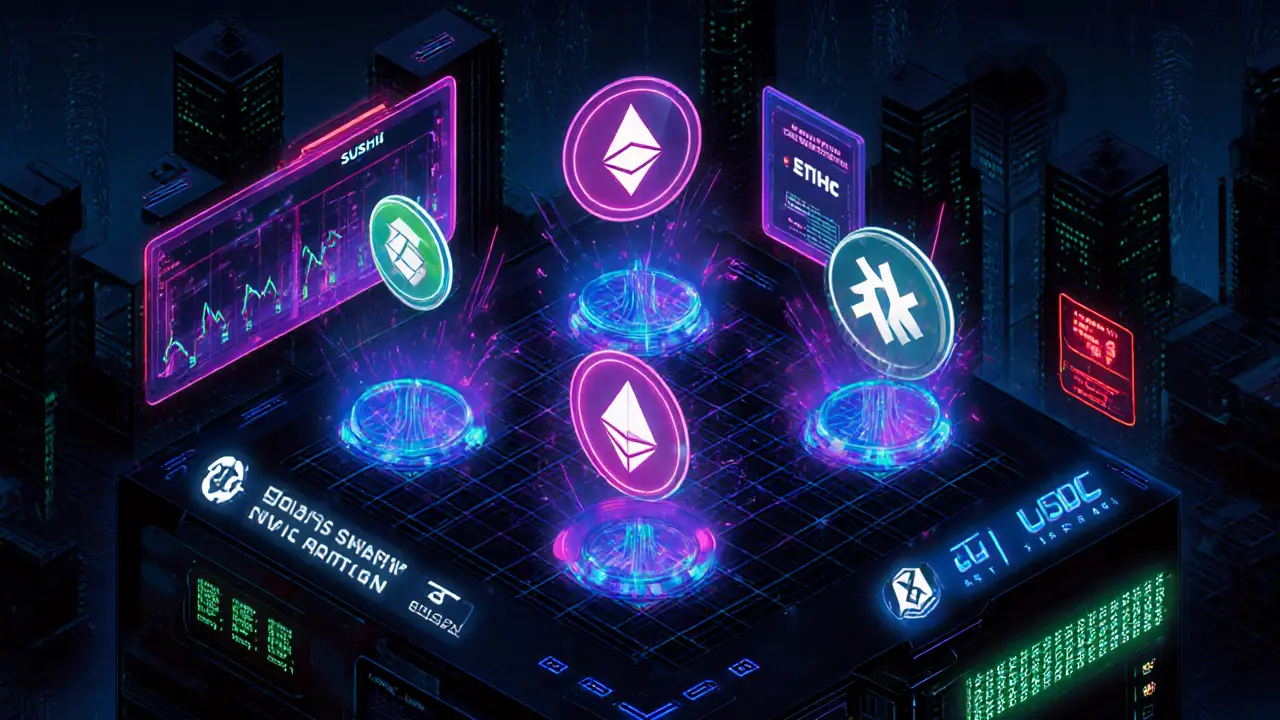SushiSwap is a leading decentralized exchange offering multi-chain trading, SUSHI token rewards, and community governance. Learn how it compares to Uniswap, how to use it safely, and why it's still a top choice for DeFi users in 2025.
Decentralized Exchange (DEX) Overview
When working with Decentralized Exchange, a peer‑to‑peer platform that lets users trade crypto assets without a central authority. Also known as DEX, it relies on blockchain technology to match orders directly on‑chain. A decentralized exchange enables token swaps without custodial wallets, which means you keep control of your private keys at all times.
Behind every DEX sits a Smart Contract, self‑executing code that enforces trade rules, settles trades, and distributes fees automatically. These contracts are the engine that requires no intermediaries, making the exchange trustless and transparent. When you place a trade, the smart contract checks balances, matches orders, and updates the ledger in a single atomic step.
But a DEX can’t move assets without liquidity. That’s where Liquidity Pool, a reserve of two or more tokens that users provide to power automated market makers (AMMs) comes in. Liquidity pools fuel decentralized exchanges by guaranteeing that anyone can swap tokens at any time, even when no counter‑party is waiting. The pool’s size and composition directly affect slippage and price impact, so traders often look at pool depth before committing capital.
Decentralized exchanges are a core pillar of the DeFi, the broader ecosystem of financial services built on open blockchains. DeFi includes lending platforms, yield farms, and DEX aggregators that route trades across multiple exchanges for the best price. Because DEXes operate on public ledgers, they inherit DeFi’s composability: a new protocol can plug into existing pools, launch its own token, or offer novel fee structures without seeking a license.
Our collection of articles reflects the diversity of the DEX landscape. We break down why some platforms like ApeSwap on Arbitrum have gone dormant while others such as PancakeSwap v2 on Arbitrum still attract volume. You’ll find deep dives into fee models, security audits, and real‑world case studies—like the Instant Bitex shutdown that highlighted the importance of robust smart‑contract design. Each piece shows how different DEXs handle liquidity incentives, token listings, and governance.
Beyond the big names, we also explore niche tools that shape the user experience. Hardware 2FA vs. software authenticators, for instance, affect how securely you interact with your wallet on a DEX. Meanwhile, trends like green blockchain tech influence the environmental footprint of the underlying consensus mechanisms, which in turn can affect user adoption of eco‑friendly DEX platforms.
Whether you’re a trader hunting low‑fee routes, a developer building the next AMM, or just curious about how decentralized finance works, the articles below give you actionable insight. They cover everything from token‑swap mechanics and liquidity‑pool analytics to the regulatory backdrop that can make or break a DEX. Dive in to see how the pieces fit together and what the future might hold for decentralized exchanges.
Discover why Dexko is not a crypto exchange, learn the real meaning of Dexko, and get practical guidance on choosing legitimate decentralized exchanges.
Learn what XSwap Protocol (XSP) is, how it works on the XDC Network, and how it compares to Uniswap and PancakeSwap in speed, fees, and liquidity.
A thorough review of PancakeSwap v2 on Arbitrum, covering fees, features, security, and how it stacks up against Uniswap and SushiSwap for DeFi traders.




